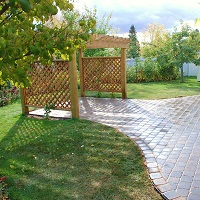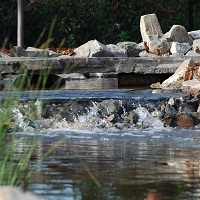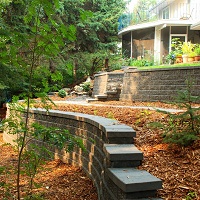Basic Design - Step by Step
1. Be aware.
Determine what is most important to you. Remember you don’t have to be the ultimate designer. The time you spend providing some direction for your contractor will help to ensure that you have a finished project that you will love the look of but also the functionality. The goal is to have the basic look and requirements for the project and then to have your contractor refine it.
There are many factors to consider:
- When – When you want to get the landscaping done will determine how quickly you will need to get started. Be aware that it may be difficult depending on the size of your project to get it completed by a quality company if you wait until June for a quote. We recommend beginning the process as early as February or March.
- Budget – Be aware that quality landscaping is not cheap. Please see our budget section to help you determine a price range for your project.
- Curb Appeal – What will best compliment my house and neighborhood?
- Yard Maintenance – Careful planning can save you time mowing and make it easier for wintertime snow removal.
- Fire Pit – Allow space around it for seating and ensure there is sufficient distance for fire codes.
- Patios - Allow space for table and chairs, recliners, walking room, and B.B.Q
- Water features – Pondless waterfall or gurgling boulders are great for their sound, look, and low maintenance, pond and waterfall (perhaps with fish) give a more upscale effect, requiring more maintenance
- Retaining Walls – To separate elevation levels of a yard (above certain heights walls have to be engineered)
- Planters – What size and type of vegetation are going to be grown?
- Environmental - Integration of rain water capture and re-use for water features.
2. Look at pictures. (And print or make note of ones you like)
- Go through portfolios like ours and get ideas
- Look through magazines
- Drive through your neighbourhood
3. Choose Stone Type and Colour
- Choose your paving stone and retaining wall block type.
- Decide whether you would like to have a smooth finish (regular) or tumbled (roman) stone. (The tumbled stone type is slightly more expensive but gives the stonework a weathered look)
- Choose your colours (keep in mind that you may choose to use more that one stone colour type in a single patio to add interest, see Expocrete's website under paving stone and retaining wall to see which colours are available in which stone type)
4. Draw a rough sketch. (it can be very basic)
- Roughly draw the basic layout of your yard and label the stonework areas.
- It may help to use graph paper if you would like to make your drawing to scale.










